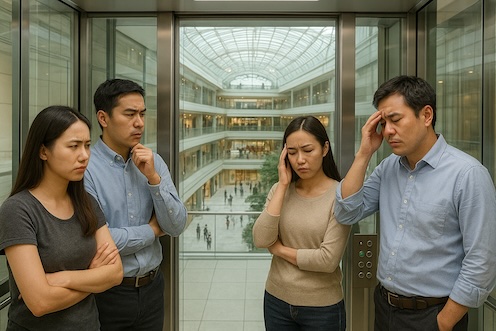The glass sightseeing elevator, which was originally expected, became a "transparent cage" in the eyes of customers shortly after the opening of the shopping center. Frequent malfunctions, long waiting times, and overcrowding within six months have led many people to prefer walking more to take escalators. The dining area above three floors has lost nearly a quarter of its passenger flow as a result, and all of this is closely related to the management's decision to reduce two elevators to one in order to save costs.

Congenital weakness
The fundamental problem with sightseeing elevators is functional misalignment. When designing, emphasis was placed on "landscape value", but actual transportation capacity was ignored: the cabin area was limited, the passenger capacity was low, and the speed was deliberately slowed down to create a viewing atmosphere. Although the transparent cabin enhances the visual effect, it makes passengers who are afraid of heights or do not like to be watched feel uncomfortable.
The procurement blind spots behind complaints
Research data shows that the complaint rate of tourist elevators is 40% higher than that of ordinary passenger elevators, with "long queues, insufficient space, and poor maintenance" being the most common. Tracing back to the source, the problem often lies in the procurement process: excessive emphasis on appearance promotion, budget compression and configuration reduction, and lack of clear constraints on transportation capacity and maintenance in the contract. More than 60% of projects did not undergo scenario evaluation during the bidding stage, resulting in frequent problems in the later stages.
Feasible improvement path
Experience has shown that sightseeing elevators should complement ordinary passenger elevators in terms of division of labor: lower floors should be responsible for diversion and experience, while higher floors rely on high-speed passenger elevators to ensure transportation. Some shopping malls adjust parameters by simulating passenger flow dynamics, resulting in an average waiting time reduction of over 30%; Some companies also reduce customer anxiety and enhance brand trust by releasing maintenance data in real-time.
Find Balance Again
Faced with public pressure, the shopping center eventually added ordinary passenger elevators and limited the sightseeing elevators to "experience only" during peak hours. After the renovation was completed, the passenger flow gradually increased and the satisfaction of merchants significantly improved. The fact once again proves that sightseeing elevators cannot bear the transportation burden alone. Their true value lies in creating an atmosphere. Only by cooperating with functional elevators can efficiency and experience be balanced.
